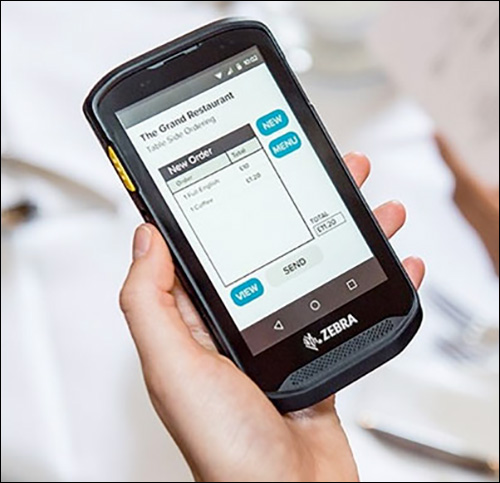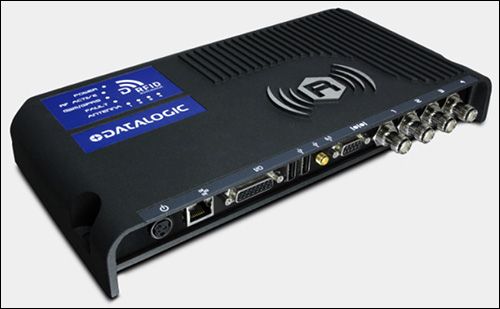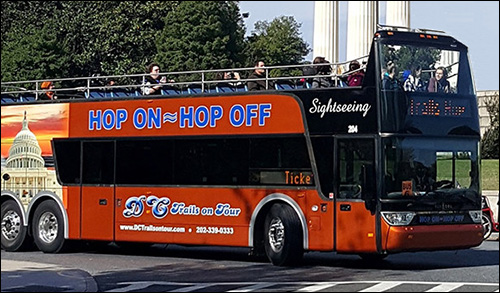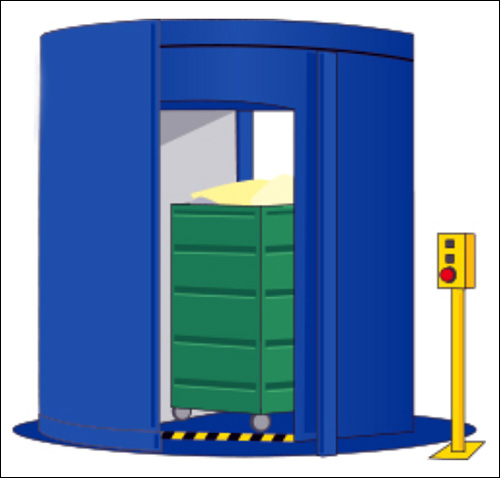The following are news announcements made during the past week by the following organizations:
Zebra Technologies; Datalogic; United Bus Technology, DC Trails; Positek RFID; the Bluetooth Special Interest Group; ams; and the USDA Animal and Plant Health Inspection Service.
Zebra Unveils SMB Mobile Device
Zebra Technologies has introduced its rugged TC20 mobile computer, designed to meet the needs of small- and medium-sized businesses (SMBs). The TC20 is a light, durable mobile device developed for indoor use for SMBs in such sectors as retail and hospitality. The TC20 provides a built-in scanner, a long battery life and high connectivity, the company reports.
The TC20 comes in models designed for 1D and 2D bar-code scanning. According to the company, pairing the device with Zebra’s RFD2000 UHF RFID sled adds tag reading, writing and locationing capabilities, making it suitable for retail store environments. Small businesses can benefit from integrated bar-code and RFID tag reading, eliminating the need for unreliable, slower and power-intensive smartphone cameras.

The TC20 is designed to withstand dusty environments and accidental drops, reducing costly repairs while ensuring longer and more productive use. With Zebra OneCare, the company’s LifeGuard for Android solution provides extended security updates throughout the device’s lifespan, ensuring the operating system’s security. Designed as an enterprise line of business smartphone, the TC20 is powered by Mobility DNA and its unique ecosystem of software, such as Datawedge, StageNow, PowerPrecisions and Mobility Extensions, which helps users streamline deployment management and troubleshooting.
Using Zebra’s Workforce Connect Push-To-Talk Express, personnel can perform voice communications via a wireless local-area network (LAN) to communicate one-on-one or in groups, allowing them to coordinate and react to changing needs in real time and improve customer service. A wide range of accessories, such as a snap-on power pack to support continuous use, hand straps, holsters and a snap-on trigger handle, allows workers to use the TC20 for a variety of tasks.
Datalogic Intros Long-Range UHF RFID Portal Reader
Datalogic, a provider of automatic data-capture and industrial-automation solutions, has announced its DLR-PR001 RFID portal reader, designed to facilitate RFID implementations for retail and warehouse applications. According to Datalogic, the DLR-PR001 is the result of in-field research and customer consultation.
With an embedded computer running the LINUX operating system, this portal is designed to ease the development of custom software and solutions. Its onboard computing power and connectivity eliminate the need for an external PC and associated cabling. The device can be connected directly to antennas or multiplexers, enabling users to add RFID detection to installations of any size and configuration, with up to 16 antennas.

“Specific customer requests combined with assessments of various in-field RFID installations were the basis for the design and development of the DLR-PR001 reader,” said Nick Tabet, Datalogic’s product marketing leader for handheld and fixed scanning, in a prepared statement. “This effort ensured the unit will deliver increased productivity in real-time inventory management. The DLR-PR001 portal reader is a great addition to the Datalogic RFID family of products – the DLR-BT001 Bluetooth pocket reader, the DLR-TL001 temperature logger and the DLR-DK001 desk/wall reader.”
The DLR-PR001 RFID portal reader, according to the company, is suitable for warehouse, automatic gate and in-store inventory applications. The onboard intelligence allows data to be collected from multiple sources, including smart-card readers and bar-code scanners. The device comes with an optional GPRS modem.
United Bus Technology Equips DC Trails’ Double-Deckers With RFID Ticketing Solutions
United Bus Technology (UBT), a leading IT solution provider for the motor coach industry, has just launched an RFID ticketing solution on DC Trails‘ Hop-On Hop-Off double-decker buses, which offer sightseeing experiences in Washington, D.C. Every year, millions of passengers use these busses to explore the most historic and popular sites in the nation’s capital.
“It provides enhanced ticketing management, valuable data and analytics on rider behavior, fraud prevention, access controls and integrates seamlessly into our fleet,” said Liliana Torres, DC Trails’ VP, in a prepared statement. “This is exactly what we need to grow our business more efficiently… Technology is extremely important to optimize our business operations and to enhance the rider experience in today’s tourism industry.”

“Each passenger will be given a RFID wristband upon boarding. Additionally, passengers are encouraged to download DC Trails Hop-On Hop-Off app while onboard the buses,” said Chris Liang, UBT’s marketing manager and the lead for this project, in the prepared statement. “The app allows users to locate every hop-on-hop-off stop and provides an ETA (Estimated Arrival Time) for every bus. The interactive e-Tour Guide feature is also built into the app, which plays on demand attraction narratives in multiple-languages.”
UBT has developed a new website for Hop-On Hop-Off, built an affiliate ticketing platform and designed a customized back-end system. This, according to UBT, makes it the first company to develop a full-spectrum IT solution for tour bus operators.
Positek RFID Technology Awarded Patent
Positek RFID, a provider of RFID solutions and integration services for the textile maintenance industry, has announced that it has been awarded a patent by the U.S. Patent and Trademark Office (USPTO) for its portal RFID technology. Positek RFID’s Cyclone and Tornado portals enable companies to process large volumes of textiles efficiently, quickly and accurately, the company reports.
Positek RFID provides volume-tracking solutions for the textile maintenance industry. Any textile that has an RFID tag embedded in it can be loaded onto conveyor belts or into carts, containers, slings or other bulk moving solutions, and can be scanned via one of the company’s portals or tunnels.

“Our patented RFID technology provides a competitive advantage over other solutions available in the marketplace and is unique in textile management,” said Jeffrey Markman, Positek RFID’s president, in a prepared statement. “The advances we’ve made in RFID have a deep effect in the efficiency, processing and filling of orders for many companies that manage inventory around the United States. We are very proud to contribute to the textile industry’s advancements in innovation.”
Positek RFID’s Cyclone and Tornado RFID reader portals can scan thousands of RFID-tagged items within seconds. The readers’ design limits reading outside of the portals and concentrates the signal where it is needed most.
Bluetooth SIG Hosts Webinar on Bluetooth Mesh Protocol
Next week, the Bluetooth Special Interest Group (SIG) will host a webinar outlining the behind-the-scenes story of Bluetooth mesh networks. The webinar, titled “What Makes Bluetooth Mesh So Disruptive?,” will be held on Nov. 8, 2017, from 9 AM to 10 AM.
Since Bluetooth mesh launched in July 2017, the technology has enabled offices, factories, homes and cities to become smart. Szymon Slupik, Bluetooth SIG’s Mesh Working Group Chair from Silvair, along with Ken Kolderup, Bluetooth SIG’s VP of marketing, will provide an inside look at how Bluetooth mesh was developed, the challenges faced, progress regarding the standard and how the standard will evolve.
During the webinar, Szymon will share the challenges the organization faced in creating a reliable, large-scale wireless mesh network, and why Bluetooth was chosen as the technology to address them. Szymon will address the design goals and requirements of Bluetooth mesh, as well as the critical decisions that needed to be made in order to meet them. He’ll also provide a look ahead at the work already under way, how the standard will continue to evolve and the markets that will benefit most. Moreover, he’ll explore why the creation of this Bluetooth standard will lead to massive disruption in building automation, wireless sensor networks, asset tracking and more.
Ams Launches NFC Sensor Interface for Industrial IoT
Ams, a worldwide supplier of high-performance sensor solutions, has released its AS3956 Near Field Communication (NFC) sensor tag IC. The AS3956, according to the company, meets industrial-grade quality standards and provides high reliability in mission-critical applications, and in products with a long operating lifetime.
The AS3956 dynamic tag acts as a contactless bridge between sensors and any NFC reader, such as a smartphone, through a host microcontroller. It supports the NDEF messaging protocol in full compliance with NFC Forum recommendations, guaranteeing interoperability with any NFC phones, including Apple iOS devices.
In designing the AS3956, ams drew on close interaction with customers that manufacture products for industrial applications and the Internet of Things (IoT). Intensive testing in real-world applications has validated the performance and reliability of the chip in a wide range of demanding operating conditions.
Unlike the consumer-grade dynamic NFC tags currently on the market, the AS3956 is suitable for industrial and IoT applications exposed to harsh operating conditions, including extreme temperatures ranging from -40 degrees to 125 degrees Celsius; products requiring an extended operating lifetime, such as HVAC equipment, hearing aids and wireless sensors for infrastructure, such as roads, bridges and utilities; and mission-critical products that require a zero failure rate. The AS3956’s internal EEPROM memory is rated for a minimum 100,000 program and erase cycles, and offers 10 years’ data retention at 125 degrees Celsius.
The AS3956 includes various features that offer flexibility in implementing NFC-based applications. These include the provision of both an I2C and an SPI interface to a host microcontroller, and a wide supply voltage range of 1.65 to 5.5 volts. In basic operation, the AS3956 acts as a standalone Type 2 tag conforming to the NFC Forum standards and supporting NFC communication with a reader.
Either of two data-transfer modes for host controller communication can be selected: Extended Mode, a self-timed data-transfer mechanism using standard Type 2 tag commands, thus minimizing software overhead on the host controller; and Tunneling Mode, to implement ISO 14443A Level 4 PICC emulation in line with EMVCo requirements or custom protocols.
The AS3956 includes an energy-harvesting capability, drawing energy from the incoming RF field generated by an NFC reader, and supplying up to 5mA to an external device. Energy harvesting is particularly useful as a cost-effective, small-footprint alternative to standard wireless charging, to extend battery lifetime in biometric smart cards, or to implement fully passive wireless sensing solutions, as required for example in smart insulin pens.
“Previous generations of general purpose NFC dynamic tags have not offered the reliability and flexibility that many applications require,” said Giancarlo Cutrignelli, ams’ head of marketing for wireless sensor nodes, in a prepared statement. “The AS3956 offers far superior lifetime performance. The rigorous quality processes and numerous validation tests put in place by ams will give customers confidence that the AS3956 can cope with operation in harsh or extreme conditions and still maintain unimpaired RF, interface and memory functions.”
Ams provides the AS3956 in a miniature chip-scale package (CSP) measuring 0.3 millimeter in height with a 1.8-millimeter by 1.4-millimeter footprint, as well as in an MLPD package measuring 3 millimeters by 3 millimeters. It is available now for sampling at $0.53 apiece in order quantities of 1,000 units. A demonstration kit is available from the ams ICdirect online store.
Canada Requires Breeding Cattle Imported from U.S. to Be RFID-Tagged
Canada has updated its ID requirements for all breeding cattle imported into that country from the United States, according to a notice issued by the U.S. Department of Agriculture (USDA)’s Animal and Plant Health Inspection Service (APHIS). Effective Feb. 1, 2018, each animal will require an RFID tag and a USA tattoo on its right ear. The USDA indicates that its metal tag will no longer be accepted as an identification option for cattle being exported above the Canadian border.
According to APHIS, U.S. regulations require procedures for applying a tag to each animal already tagged with an official ID. Exporters or veterinarians seeking further information should consult the IREGS website. To reflect these new requirements, APHIS reports, the Canadian Food Inspection Agency (CFIA) has begun issuing import permits for breeding cattle. Protocols and certificates for such animals are updated at the IREGS website and in the Veterinary Export Health Certificate System.
This update in Canada’s import requirements is intended to be consistent with domestic requirements. The nation has required RFID tags in its cattle herd since 2010. Prior to this, when U.S. breeding cattle were imported into Canada, they needed to be re-tagged upon arrival with an RFID tag. The change is intended to reduce the amount of time required to conduct inspections at the Canadian border. What’s more, APHIS indicates, it eliminates the need for U.S. animals, upon reaching their Canadian destination, to be tagged a second time with a Canadian ID.

